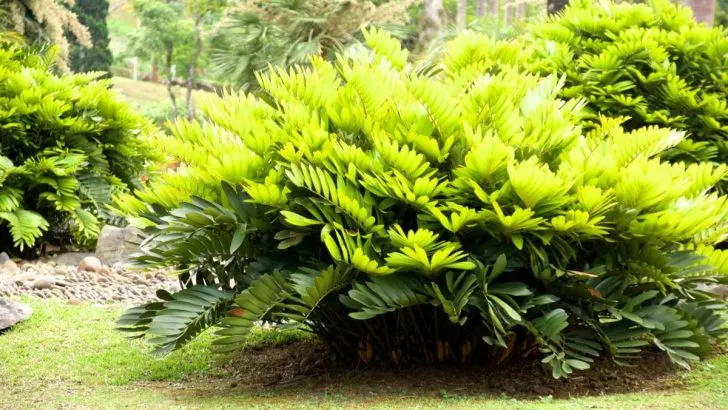Unlike the types of palm trees in California you probably already read about, the coontie palm we will talk about today isn’t really a true palm tree.
When we wrote about types of palm trees in Florida recently too, it was obvious that the trees are genuine real palm trees coming from the Palmae family. Coontie palm doesn’t belong to this family tree group. Coontie palm originates from the Zamiaceae family, ie. zamia species.
Its leaves aren’t as big as the palm’s leaves and it reminds of a pine tree as well. But having these female plants in our garden is still a nice experience. It is a low-maintenance plant and it will be thankful for every effort you put into its growth.
If you’re ready, how about we learn more about the care guide for a coontie palm below?
About Coontie Palm Tree
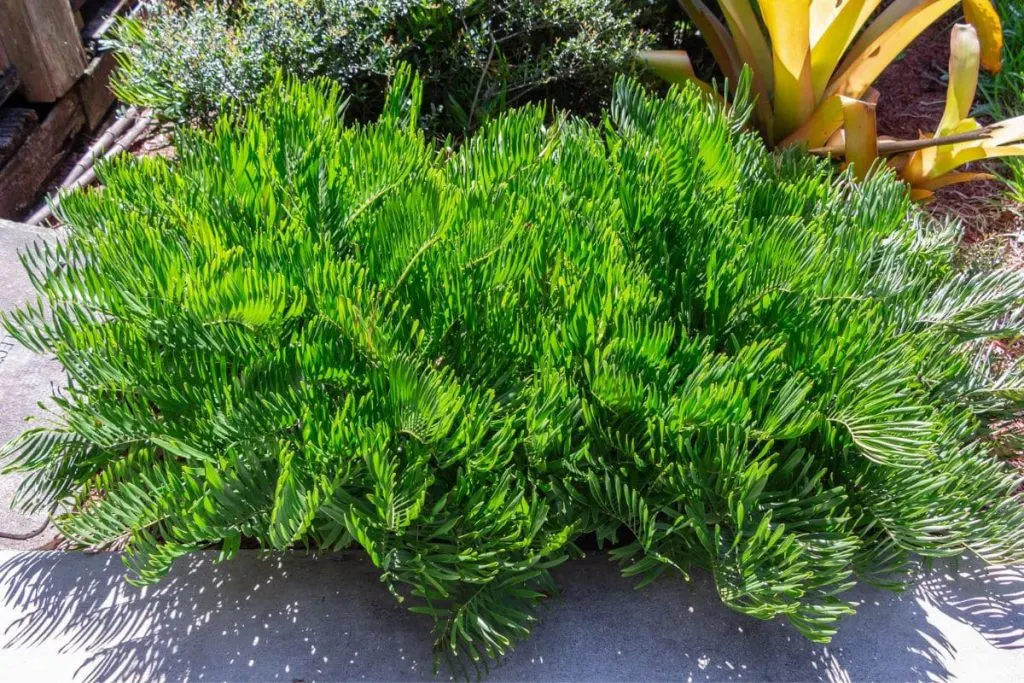
Even though this tree is called a female tree, counties have male cones and female cones too. Male cones are a bit thinner and not as high as female cones.
Their appearance is slightly different too. This lovely plant attracts wildlife such as the rare Atala butterfly. It is a host plant for this plant. It belongs to the zamia species and it is often called the zamia Floridiana too.
Its name says palm, but this plant isn’t really a palm. It’s more of a cycad native plant. In botanical Florida publications, it is often written about this specific plant. It’s a great plant for your garden or bigger yard.
- Native habitat: South USA, sunny-partial shade forests
- Botanic name: correct botanical name is Zamia floridiana
- Common names: Seminole bread, Zamia pumila, Zamia coontie, Zamia integrifoliaIts seminole bread name comes from the fact that Seminole Indians used its residue to make bread
- Family: Zamia species known for their underground stem
- Leaf shape: evergreen leaves, green, arrow-shaped, due to its leaf shape they often call itflorida arrowroot as well
- Flowers/flower color: doesn’t have flowers or fruits
- USDA zone: cold hardy
- Toxicity: Cycasin, an unidentified neurotoxin, toxic to dogs, cats, and humans
- Growth type: moderate grower
- Use: hedge shrub
- Where to plant: sunny location to partial shade away from other shrubs
How Tall Do Coontie’s Palms Get?
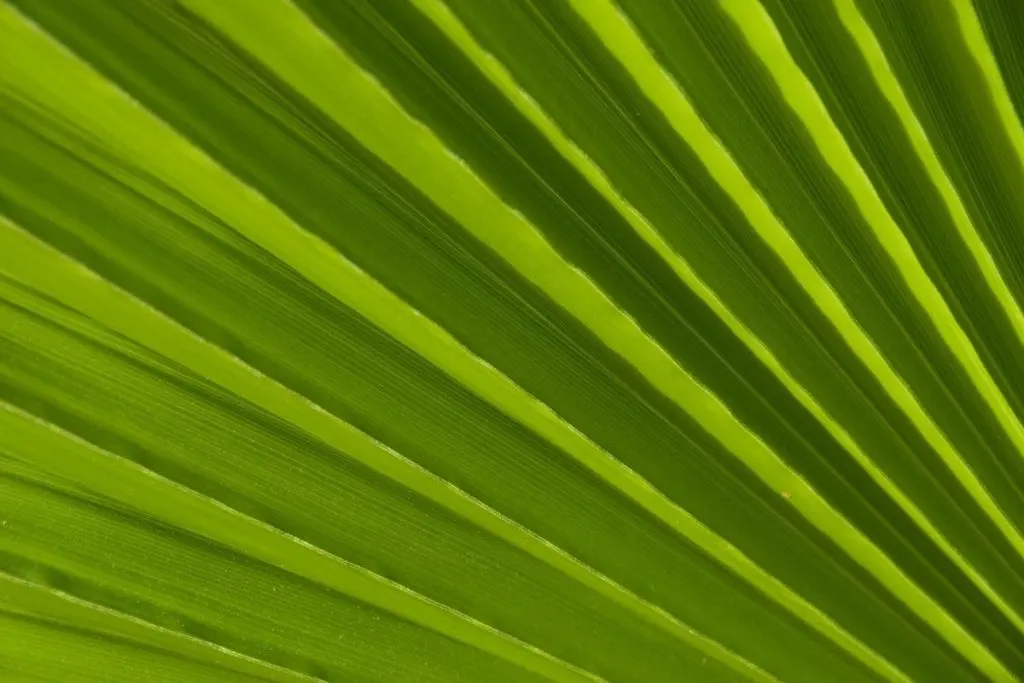
The maximum height of coontie palms is 3 feet. This also tells us that the coontie palm isn’t a true palm tree.
We know that there are shorter types of palms, but their height is still around 5 feet. Most of the smaller palms tree still grow up to 10 feet tall.
Where Should I Plant A Coontie Palm?
But you can also plant it directly into the ground. The best location for it is the partial shade-full sun.
Do Coontie Palms Love Partial Shade?
Along with a bit of full sun during the day, they love the partial shade. The best location for your coontie palm (zamia pumila) is the morning sun with lots of partial shade in the afternoon.
However, we don’t advise you to risk planting them in full shade. Its leaves’ color won’t be so flattering, its growth might be a bit slower, etc.
Is Coontie Palm Drought Resistant?
Are Coontie Palms Poisonous To Dogs?
Seeds of coontie palms are deadly. When digested, it can cause a pretty fast death for your pets. The entire plant is poisonous, it causes breathing difficulties, liver failure, bloody diarrhea, dark stools, bruising, skin irritation, and much more.
Advise: keep your zamia Floridana away from your pets, or don’t even grow it if you have them.
Care Guide For Female Plants-Coontie Palms
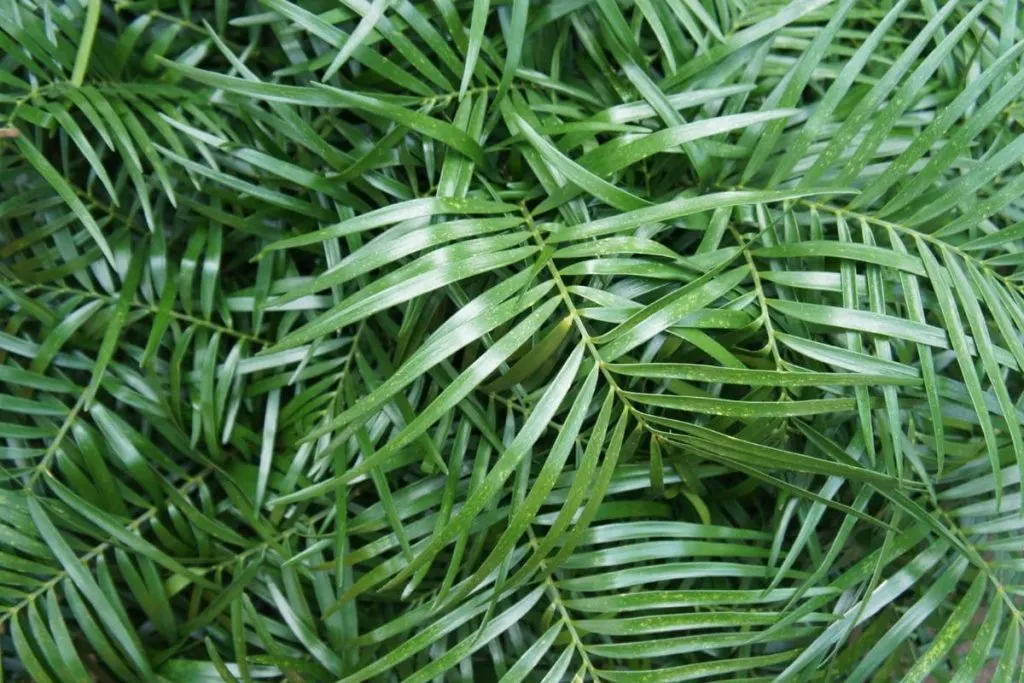
If you want to plant this palm tree in your yard, we bring you a simple ultimate care guide for this tree. Let’s learn all about its watering needs, light needs, and much more below.
Light Conditions
Since the plant is planted away from other plants due to its toxicity, you will need to think carefully about the location. Other plants will not be able to shade it. If you do not think carefully about the location, the plant will be exposed to the sun all day.
Too much sun exposure is fatal for the coontie palm. She loves the sun, that’s right, but only for 3 to 4 hours a day. This is not the same as 8 or 9 hours of sun exposure.
Such exposure to the sun will weaken its leaves, scorch them in summer temperatures, dry them, etc. Take a look around your garden before planting. Pay attention to all corners and places with sun and shade.
You can see which objects in the yard cast a shadow, when the sun sets on the right side, when on the left side of the yard, etc. That way you will certainly not make a mistake.
Watering Schedule
Since the plant grows and is cultivated in hot areas, it needs a lot of water to survive. In bursts of high temperatures, feel free to give her plenty of water, but in the morning hours before the sun rises.
You surely know that it is not a good idea to water a plant when it is in direct sunlight, especially its leaves. You can water these leaves a little, but never when it is exposed to the sun. Regular watering of this plant would be every 6-7 days. Always make sure the soil is dry between waterings.
Soil Type
In order not to go beyond the requirements of this plant, plant it in sandy loam well-drained soils and hope for the best. This is the most suitable type of soil for this plant and any oscillations are not really the best idea.
I know people who plant them in soil which is the last option and hope for success. But unfortunately, it doesn’t work that way. To achieve good growth, sometimes you have to please the plant completely.
Fertilizer
Fertilize this plant with ammoniacal nitrogen fertilizer. It definitely has all the necessary nutrients for your plant. Fertilize it twice a year. In early spring and mid-summer. Never fertilize the plant in autumn or winter.
Temperature
Although it is quite easy to conclude, the plant likes hot regions. It originates from South America and likes exposure to the sun, high temperatures and to your great surprise, it can also tolerate the cold. Of course, things like snow and frost aren’t ideal, but colder temperatures won’t hinder her growth or appearance.
Humidity
Humidity is not that important for this plant. It can grow in climates with 40, as well as those with 60% humidity. If you grow it indoors for a while, there is no need to increase the humidity, the plant will be fine with average air humidity.
Pruning
If the plant is attacked by pests and causes damage, be sure to react immediately by pruning. We advise you to prune them both in the spring after leafing.
Prune them in the late autumn before the dormant period in order to prepare them for the next season. The plant is evergreen, but a little correction and arrangement will encourage its growth.
Propagation
From the female cones, it is best to collect the seeds. But pay attention to how you store the seeds. Not all are suitable for planting and not all seeds will be successful. Carefully plant them in well-drained, fertilized soil, place the pot in a sunny location and wait for germination.
Wrapping up
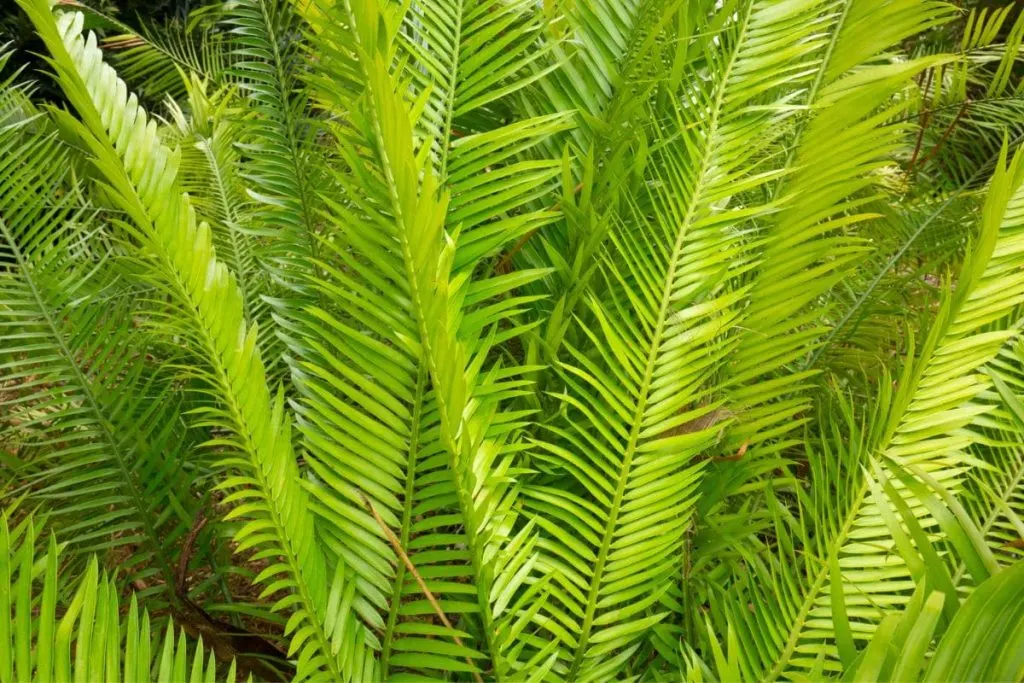
How did you like our coontie palm article? We hope that your impressions are positive and that you will consider planting this plant. Leaving aside the fact that the plant is toxic, it is indeed a beneficial plant for the garden.
It doesn’t grow too tall, it doesn’t branch too wide, it’s not messy and it’s everything you want in an outdoor plant. You have also seen that its care guide is very simple. You don’t have to worry about the steps you took with this plant, everything is very logical and simplified.
We hope you enjoyed our article today. That’s all for today, see you tomorrow with more similar articles.

